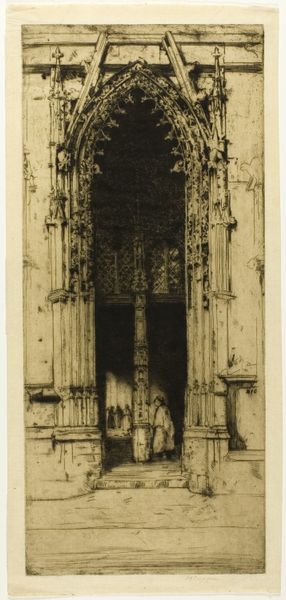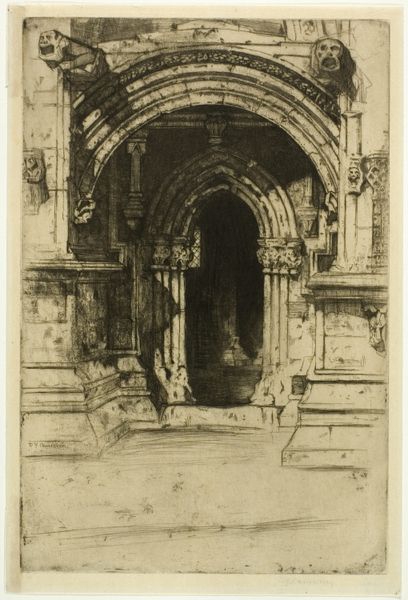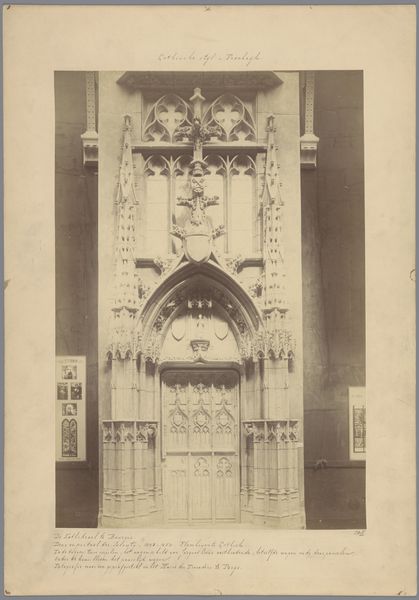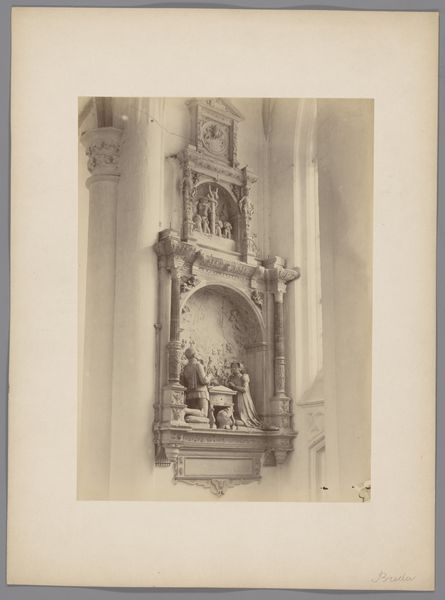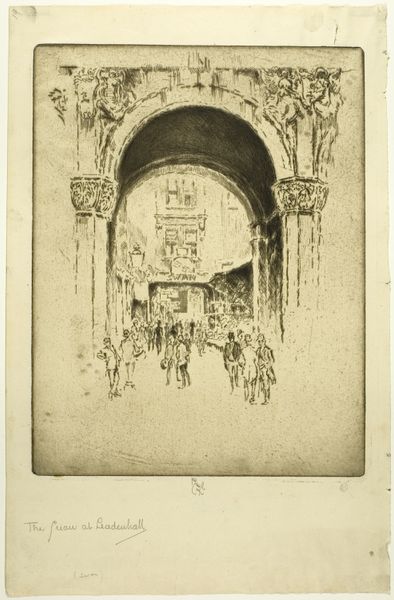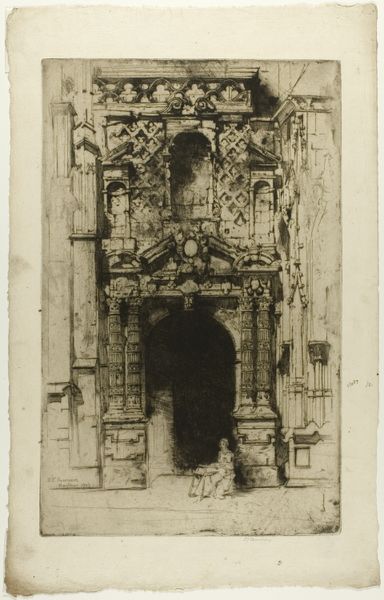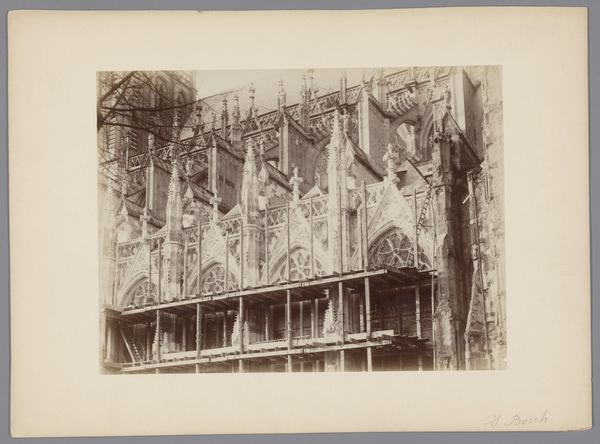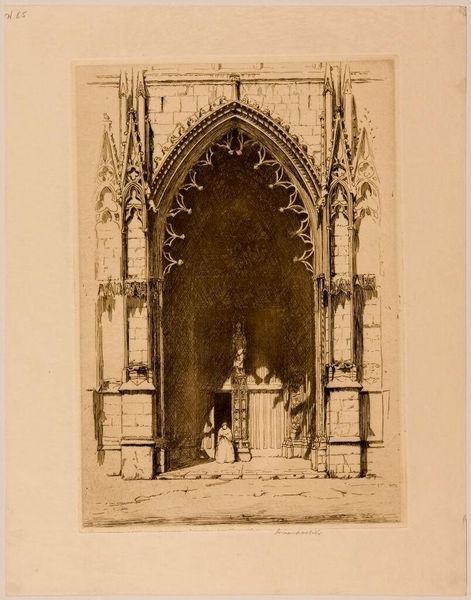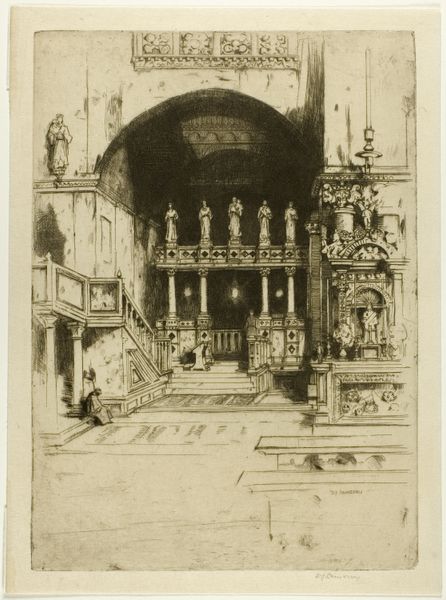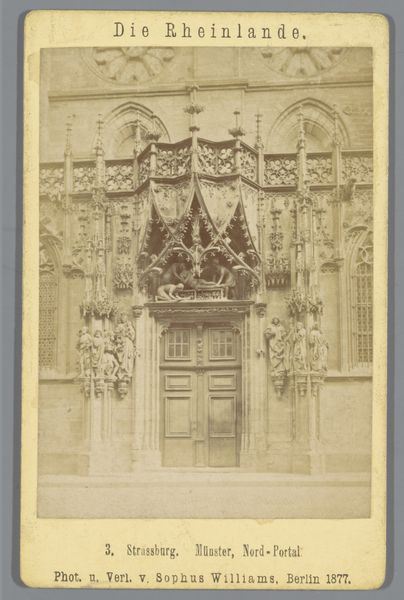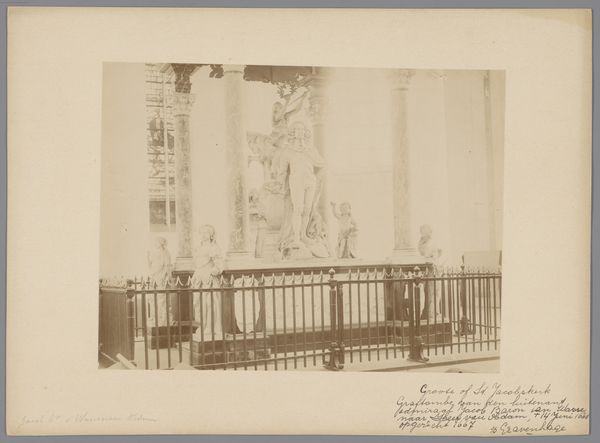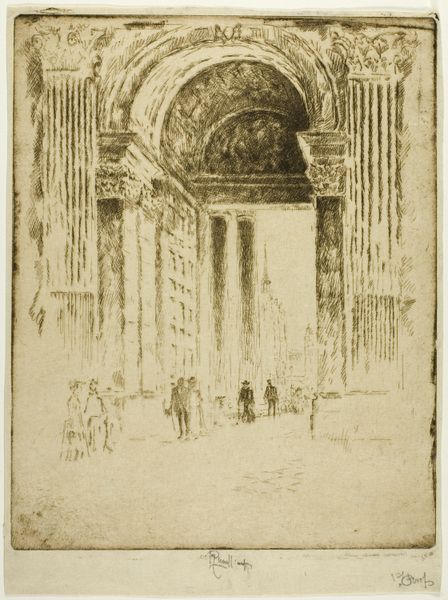
Dimensions: 299 × 189 mm (image/plate); 363 × 222 mm (sheet)
Copyright: Public Domain
Curator: Edgar Chahine created this print, "Entrance to Saint-Germain-l'Auxerrois, Paris" around 1902. It’s held here at the Art Institute. Editor: It’s a melancholic scene. All muted browns and grays rendered through this delicate etching. The monumental architecture dwarfs the figures; they seem resigned against it. Curator: The Saint-Germain-l'Auxerrois church held significant royal connections; it was a parish church of the Louvre. Chahine created this work during a time when the church was undergoing renovations, making it an interesting statement of his commentary. Editor: And etching itself, the craft behind this particular printing process, suggests something important about replication and the means by which imagery proliferates. Looking at this, one cannot ignore the materiality – the paper, the ink, and labor hours consumed to produce even a single image. It really prompts us to reflect on accessibility. Curator: Certainly, there’s the politics of representation too. Who is represented in this city view? We have religious figures and ordinary Parisians populating the streets, but what are the socio-economic backgrounds of those included and excluded from these pictures? Editor: It also really reminds me of Charles Meryon, particularly how the emphasis is more on the grandeur of the structures compared to the ordinary people present. Curator: You raise an interesting parallel. Saint-Germain l'Auxerrois played a part in historical events of considerable importance, so you wonder about the artist choosing this as the subject, during its renewal to reimagine its socio-political and architectural significance. Editor: Exactly. It also is important to appreciate what a feat this printed etching represents. From conception and the use of acid-resistant ground to render a plate, all of it must be regarded in concert when analyzing Chahine’s artwork here. Curator: This image leaves you wondering, not only about the structure in the past but also what remains in the Parisian present. Editor: Indeed, it is a study in how a process shapes a cultural moment, and perhaps also the other way around.
Comments
No comments
Be the first to comment and join the conversation on the ultimate creative platform.
